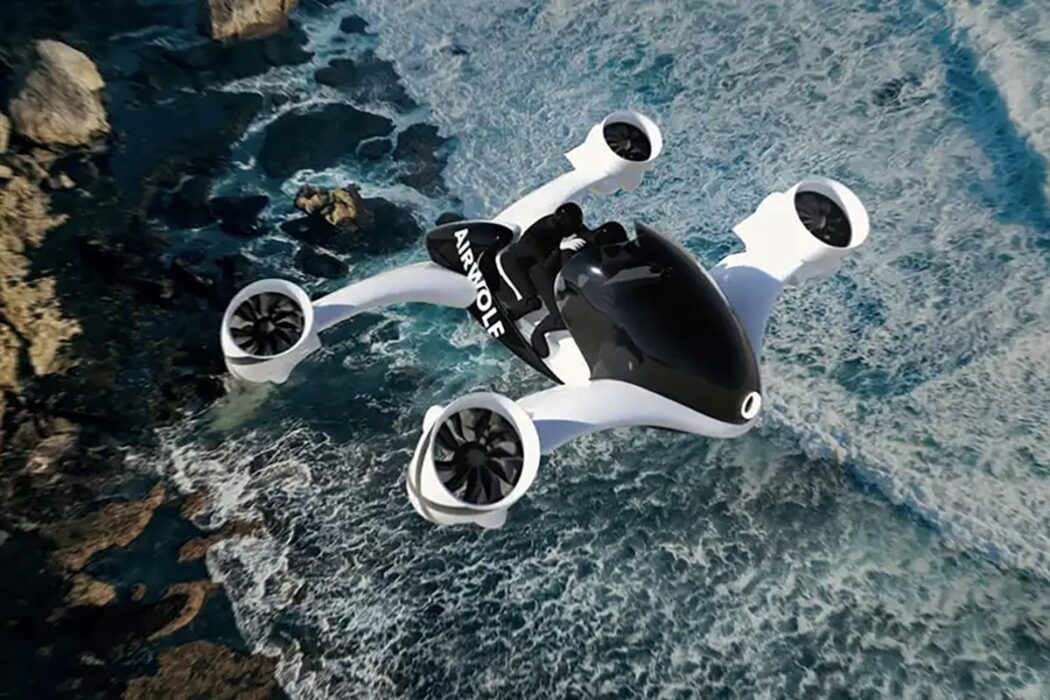Two companies are in a race to create the world’s first flying motorbike, each taking distinct approaches. Jetpack Aviation had the Razor Flying Motorbike on its agenda for several years, but the California-based company recently announced it is pausing the project to focus on developing large, fast military drones.
Meanwhile, UDX is forging ahead with its Airwolf. The Czech team is currently testing a scale prototype at Technology Readiness Level 5 of 9. In NASA terms, this means the “component validation in the relevant environment.” In simpler terms, it indicates that the two-seat electric vertical take-off and landing (eVTOL) vehicle is still several years away from full development, but progress is being made toward a functional, full-scale prototype.
“Our mission is to make flight accessible to everybody,” UDX CEO and cofounder Jiri Madeja told Robb Report. Although potential customers can sign up for test flights, specific dates have yet to be announced.
The Airwolf will feature a carbon-fiber chassis, a fully electric powertrain, and four 3D-printed Electric Ducted Fans (EDFs) from the Italian component manufacturer VasyFan. Visually, it differs significantly from the Razor, which resembles a conventional motorcycle with small jet packs at each corner. In contrast, the Airwolf looks like a hybrid eVTOL with an exposed seat.
The propulsion methods of the two vehicles also vary greatly. The Razor employs eight jet engines, offering greater speed, redundancy, and a compact design. The Airwolf, on the other hand, is a zero-emissions tiltrotor eVTOL capable of vertical takeoff and landing, precision flight control, and enough space for a passenger behind the pilot. It also features fixed wings for gliding in emergencies.
The EDFs facilitate easier storage in a garage compared to other aircraft with conventional propellers, which require more space to achieve equivalent thrust. Madeja explains that UDX will manufacture the airframe in-house, while the electric components will be produced by Czech company MGM Compro, and battery cells will likely come from Tesla.
Initially, the Airwolf will have a 30-mile range. However, Madeja is optimistic that with advances in battery technology and optimization, the final commercial version will be able to fly 60 miles for about 25 minutes. With acceleration from zero to 60 mph in just three seconds and a top speed of 140 mph, it will fly twice as fast as nearly every other single-seat eVTOL in development. Madeja also envisions the Airwolf being used for search and rescue missions.
This thrilling performance and agility come with a high price tag of about $375,000, nearly double that of its single-seat competitors but comparable to the Razor.

Madeja expects the Airwolf to fall under an FAA Special Airworthiness Certificate, Experimental Category, requiring an AMEL (Airplane Multi-Engine Land) private pilot’s license to fly in the United States. UDX plans to make the U.S. its initial market and eventual manufacturing base. The required license will be attainable with approximately 50 hours of training. If the development stays on track, the Airwolf should be commercially available by 2028.
Despite the steep price, the Airwolf’s advanced features, speed, and potential for varied uses may appeal to adventurous buyers and professionals in sectors like search and rescue. As development continues, the competition between these innovative companies will push the boundaries of what is possible in personal air travel, potentially making flying motorbikes a reality sooner than expected




